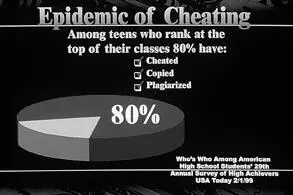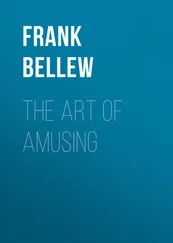Frank Abagnale - The Art of the Steal
Здесь есть возможность читать онлайн «Frank Abagnale - The Art of the Steal» весь текст электронной книги совершенно бесплатно (целиком полную версию без сокращений). В некоторых случаях можно слушать аудио, скачать через торрент в формате fb2 и присутствует краткое содержание. Год выпуска: 2001, ISBN: 2001, Издательство: Broadway Books, Жанр: Старинная литература, на английском языке. Описание произведения, (предисловие) а так же отзывы посетителей доступны на портале библиотеки ЛибКат.
- Название:The Art of the Steal
- Автор:
- Издательство:Broadway Books
- Жанр:
- Год:2001
- ISBN:9780767910910
- Рейтинг книги:4 / 5. Голосов: 1
-
Избранное:Добавить в избранное
- Отзывы:
-
Ваша оценка:
- 80
- 1
- 2
- 3
- 4
- 5
The Art of the Steal: краткое содержание, описание и аннотация
Предлагаем к чтению аннотацию, описание, краткое содержание или предисловие (зависит от того, что написал сам автор книги «The Art of the Steal»). Если вы не нашли необходимую информацию о книге — напишите в комментариях, мы постараемся отыскать её.
The Art of the Steal — читать онлайн бесплатно полную книгу (весь текст) целиком
Ниже представлен текст книги, разбитый по страницам. Система сохранения места последней прочитанной страницы, позволяет с удобством читать онлайн бесплатно книгу «The Art of the Steal», без необходимости каждый раз заново искать на чём Вы остановились. Поставьте закладку, и сможете в любой момент перейти на страницу, на которой закончили чтение.
Интервал:
Закладка:
KIDS TODAY
What bothers me a lot is, it used to be just the hardened criminal you had to worry about. Today it could be anyone. I’m not being politically correct, but I’m convinced that the main reason we have so much fraud today is because we live in an extremely unethical society. There’s been a sharp slippage in ethics that has inspired a culture of fraud. And so what you’re up against today is people who you’d consider trustworthy who have no ethics.
There are all these computer-savvy kids, many of whom are making twenty-dollar bills on their computers at home. They’re scanning them in and printing them on their ink jet printers and taking them to the convenience store or the school cafeteria and spending them. This happens all the time because they think it’s okay to do it.
We live in a society that doesn’t teach ethics at home. We live in a society that doesn’t teach ethics in school, because teachers would be accused of teaching morality. We live in a society where you can’t even find a four-year college course on ethics, and if you could find one, they’d be talking about ethics three hundred years ago that have no relevance to ethics in the business world today.

I don’t know anything that shows it better than Who’s Who Among American High School Students. For more than thirty years, the organization has gone out and selected sixteen thousand high school students to be honored each year in their publication. In order to be accepted, a student had to have maintained a 4.0 average through the tenth, eleventh, and twelfth grade. Once accepted, a student has to fill out a form and answer five questions. I’ve always been interested in question No. 3, and I’ve followed the results for twenty years, because they’ve changed dramatically. The question asks, During the last three years of high school, did you steal, cheat, lie, copy, or plagiarize? In the latest survey, more than 80 percent of the students said that they did. Like it was okay.
I believe we should be teaching ethics as early as maybe fifth grade, but we’re not doing it. Not long ago, I visited two major pharmaceutical companies. Abbott Laboratories and Glaxo Wellcome, and both of them told me that they had brought ethics training in house. They established their own ethical standards, and they require their employees to go through training. They’ve had to create their own code of conduct, because it’s not being done at home.
When I talk to people about con artists, they always ask me, well, is there a certain type of person to beware of? It’s been my experience, on both sides of the law, that there is no profile of who’s a con artist or forger. I’ve seen men who were eighty years old and women in their teens commit the same types of fraud. There may be a profile for bombers or serial killers, but not for the confidence man. Most of the time, it’s the people you least expect who steal from you. Of all the calls I get from corporate managers lamenting that an employee stole from them, it’s never, “Well, I had this person and six months later I found out he was embezzling from me.” Instead, it’s always, “This man worked for me for twenty years. He was a saint. I trusted him like my brother. I can’t believe he stole from me.” It’s far more often the long-term employee than the newly-hired one who steals from you. In the world of the con, the unexpected becomes the expected.
AN OUNCE OF PREVENTION
As easy as these crimes are to commit, I firmly believe that most of them are easily prevented. Banks and companies simply have to learn to secure their systems as best they can. And you have to be a very smart consumer today.
I travel all over the world talking about fraud, and one of the interesting things is that in Europe or Australia, even in Canada, the societies are very proactive. Americans are very reactive. A guy in Britain, for instance, will say, “This check? We could use this check, but then somebody might do this or might do that, so let’s fix it so he can’t do that.” In the U.S., the attitude is, “We’ll use this. If we have a problem, we’ll fix it.” They worry about it later on. In fact, 90 percent of those who hire me to design secure documents, they’ve only hired me because somebody counterfeited their documents. No company has ever called me in to design their check ahead of a problem. It’s always, “Somebody really got to us for a ton of money, and we don’t want that to happen again.”
It’s much better to avoid becoming a victim than trying to figure out how to get your money back once you become a victim. Once you’re a victim, you won’t get your money back. Everyone has to start being proactive. You have to ask yourself every time you go on the Internet, which is probably every day, what information am I putting out there, and how could someone use that information? The crime of the future is identity theft, when some stranger acquires enough of the basic information about you that, when it comes to buying things on credit and making withdrawals from the bank, he in effect becomes you. It’s already the fastest-growing crime in America, as criminals assume other people’s identity in disturbing numbers. That’s what happened to Michelle Brown, whose ordeal I’ll return to in the final chapter.
In the following chapters, I plan to take you into the world of the confidence man. I’m going to tell you about some of the most ingenious scams that I’ve encountered during my twenty-five years as a fraud specialist. I’ll tell you how to spot a bogus check and how to recognize a counterfeit bill. I’ll tell you why a piece of Scotch tape can make a check worth a lot more, and why you shouldn’t write your grocery list on a deposit slip. I’ll tell you about how a man made a considerable amount of money off supposedly broken windows, and why criminals iron credit cards. I’ll tell you about the mustard squirter and the rock in the box, about the Vickers Gang and their long-running refund scam, about how to earn $100,000 from a demolished car, and why a thief brings glue with him to the ATM. This is all for the purpose of teaching you how to avoid becoming a victim of fraud. For I strongly believe that punishment for fraud and recovery of stolen funds is so rare today that prevention is the only viable course of action.
Above all, the thing to remember is that nothing is foolproof. Every form of payment has an inherent risk in it. Every system has a flaw. Every system has been designed by a man or woman, and that means a man or woman can defeat it. Sherlock Holmes said it best: “What one invents, one will discover.” And, you can be sure a man or woman will defeat it. I can only laugh when someone says to me that this electronic system is foolproof, you can’t beat it. That’s a ridiculous statement. Someone had to create it, so obviously someone can defeat it.
I do recognize that by revealing how scams work, I run a risk. During my career, I have never conducted seminars open to the general public, but always under the sponsorship of an association, a company, or a financial institution. I hope, when you read this book, you see it as a useful educational tool for a business person or a consumer. I, with a criminal mind, know that some will see it as a bible and a great instructional book for the amateur forger. In order to educate the masses, though, I feel it’s worth taking that risk. Why should only the criminals know the tricks?
Fraud goes on every day, in every city, all over the world. Practiced today by increasingly wily criminals, fraud is incredibly complex, and full of nuance and creativity. Businesses and consumers have never been more vulnerable. To more and more people, fraud is no longer an abstraction but an act with a face and a name. The most effective strategy to prevent it is to make things difficult and complicated enough to raise a murmur of distress from the crook. That way he’ll decide it’s not worth the effort to try and take advantage of you.
Читать дальшеИнтервал:
Закладка:
Похожие книги на «The Art of the Steal»
Представляем Вашему вниманию похожие книги на «The Art of the Steal» списком для выбора. Мы отобрали схожую по названию и смыслу литературу в надежде предоставить читателям больше вариантов отыскать новые, интересные, ещё непрочитанные произведения.
Обсуждение, отзывы о книге «The Art of the Steal» и просто собственные мнения читателей. Оставьте ваши комментарии, напишите, что Вы думаете о произведении, его смысле или главных героях. Укажите что конкретно понравилось, а что нет, и почему Вы так считаете.












